Anna Boyarkina, Miro (formerly RealtimeBoard): about product thinking, team culture, future skills
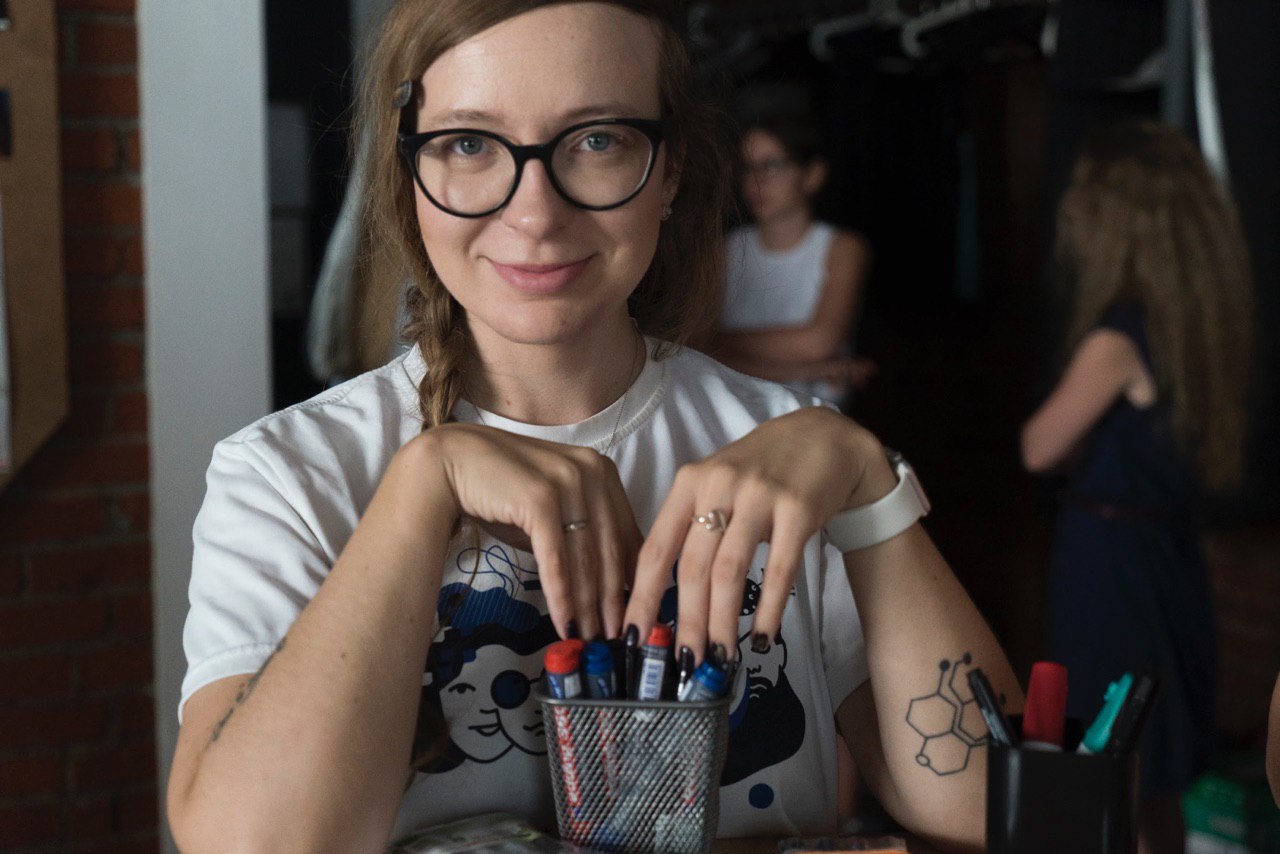
I spoke with Anna Boyarkina, head of product at Miro (formerly known as RealtimeBoard), a visual collaboration platform. This is the eighth in a series of interviews with the masters of their business about the product approach, behavior change and entrepreneurship.
Context
I caught you in California, right after the San Jose conference. What are you doing here?
Arrived at Saastr. Dropbox, Slack, Box and other companies performed there, many with annual revenues of more than $ 100M. In this weight category, people from SaaS are looking for opportunities to talk with people like them, and of course, in addition to this, share experiences.
What are they talking about?
Talk about land and expand and how to scale products is popular. They talked a lot about the “consumerization” of corporate products - about the fact that now software in the company does not spread top to bottom - the teams themselves choose what to use. After some critical mass, IT specialists have no choice but to allow such software in the whole company. And now it’s very important to make products that people will love, even if this is the enterprise segment.
There is a lot of talk about growth, I liked the slide by Jason Lemkin (founder of Saastr): it’s almost impossible to grow a product to 1 million, from 1 to 10 it is incredible, and from 10 to 100 it is already inevitable.
This is similar to the explosive exponential growth that investors are looking for. Do you think venture investment and product thinking are inseparable?
Not at all. There is a lifestyle or niche products that are quite good and develop without venture money. But at some point, you can make a business out of a product. And then this is another story. You begin to look through the prism of not a small group of people and their problems, but in a completely different way. How can you solve the big problem of a large number of people in such a way that it brings $ 100M? If you go in the right direction, venture investors find you yourself. This, in general, is the well-known story about product-market fit - if the market is large, then investors are interested.
Accel found you and invested $ 25 million. Why do you need this?
We have been breaking even for several years, and this is money in growth, but in general it is not about money as such - for us it is primarily a partnership. Accel has invested in successful companies such as Slack, Dropbox, Atlassian, it is also important for us to go together with a partner who knows the market and subject area well.
I would like to talk about metrics. What are the most important metrics for Miro?
The most important thing is usage, that is, how much the product is used. We look at three key things - Weekly Active Users, Retention, and our North Star. The idea of North Star was popularized by Sean Ellis , the same one who coined the concept of "growth hacking" in his day. In theory, North Star should correlate with monetization and the core value of the product. Through this metric, we see that we are solving the user's problem and are starting to get paid for it. Our North Star at Miro is the number of active collaborative boards.
Product and success
Miro is a success story on steroids, but without any fuss. A grocery startup from Perm, which has grown into an international company. You are known all over the world. How did you do it?
Do it normally - it will be normal! There are actually three things:
1. A good product. It turns out that when you do not stop listening to users, it is empathetic to them.
2. Learning the best practices that work in the industry . It is important not to boil in the vacuum of one's illusions. Look around who is doing what. This helps build both a product and a company.
3. The team that is working on it.
There is also a secret sauce: do not piss.
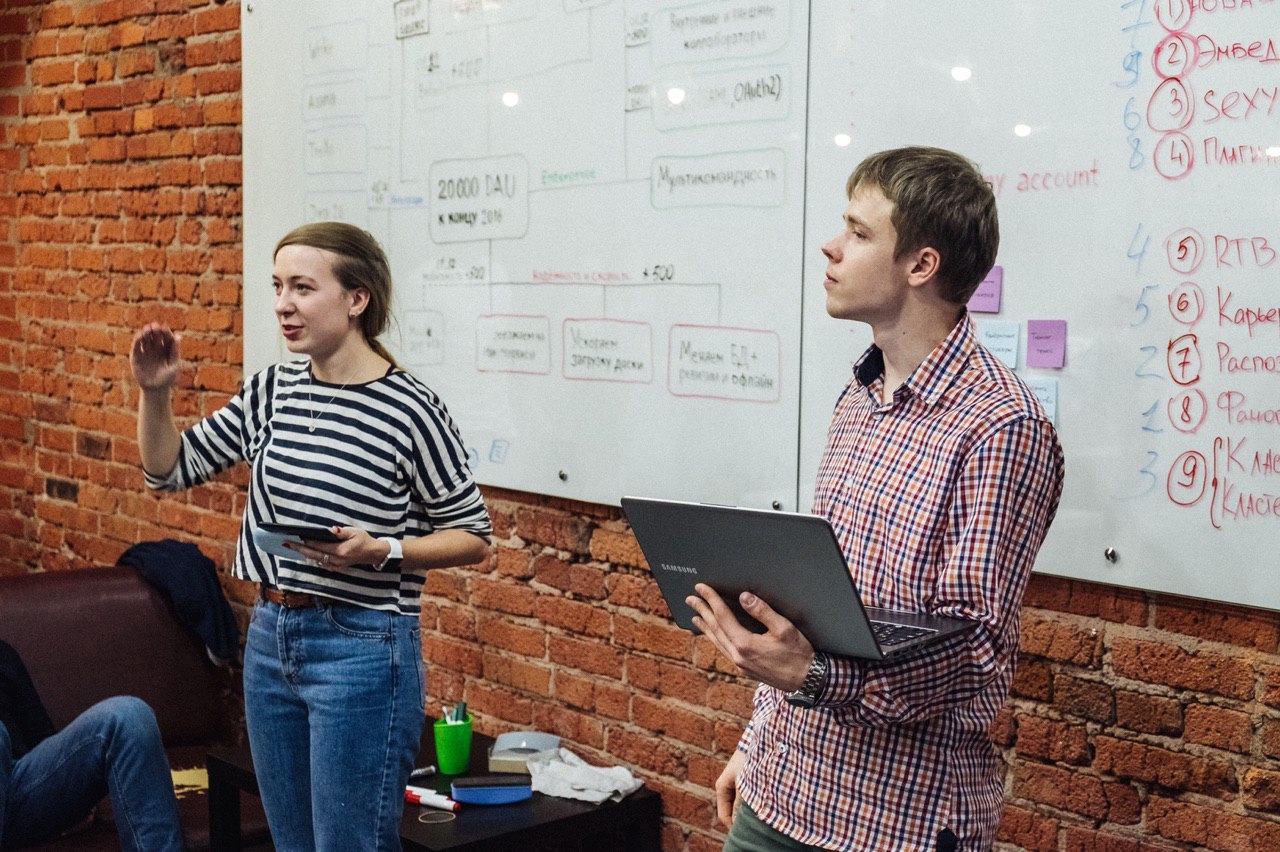
Bravery and stupidity?
Let's talk about it. I reflected on this subject. At the initial stage, dementia and courage is what you need. It helps you move forward and fill the bumps. Choose a strategy with which you will move on.
And then you grow up, and it is necessary that dementia slowly go away. But so that courage remains.
It is important to look at what kind of company you are, at what stage, in which market. Dementia is not about caring for people. Decisions must be balanced, a strategy must emerge. You start to think not in terms of a month-quarter, but in a year, three or five.
But is there a feeling that if you focus very much on attention to people, then you can not slide into inhibition? I had it when I worked in a company with a century of history. Everything was very harmonious and about people, but everything moved extremely slowly.
You compare warm with soft. If you are talking about Philips, then they have a very mature industry. Why should they be agile? Maybe the company doesn’t want to move faster.
Then, it turns out you are talking about the stage of growing up. When courage and balance are combined ...
It's the most important. It is unlikely that someone, starting to do a startup, wants to work in a "slow-moving monster." But the essence of growth is that processes slow down. A bureaucracy appears. This is the biggest challenge: for the company to grow, but not become a corporation.
We are still small, but we think that processes should not impede growth and decision-making.
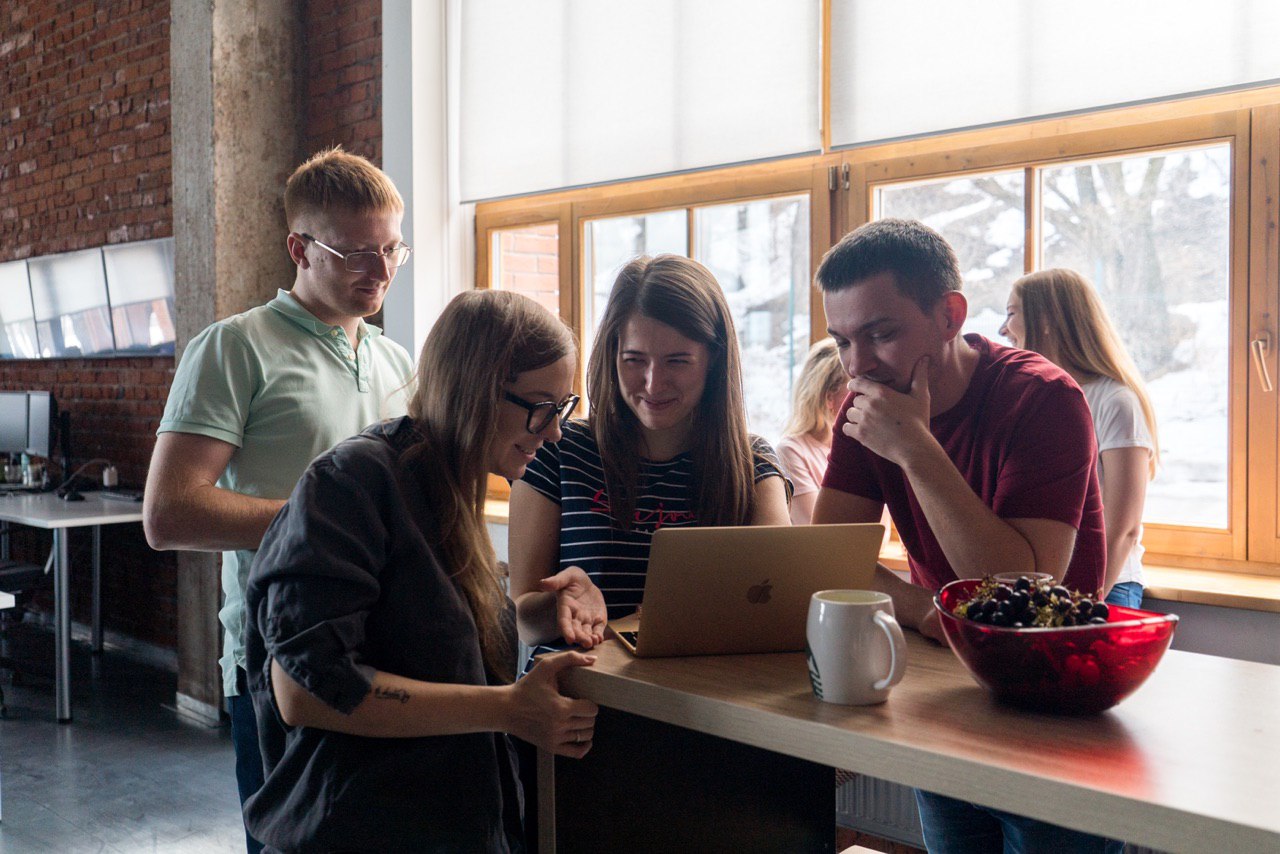
In a nutshell, what is the uniqueness of Miro as a product and for whom do you make it?
Miro is a very simple visual way to work together. At the same time, he has many opportunities with which you can adapt it for yourself. It is necessary to compare with something ...
Let's compare with some prototyping service.
Take UXPin for example. It may be features in Miro. It’s important for us to close the users workflow so that the creative process can take place in one place. Otherwise, you constantly switch between applications, there is no one source of truth.
The strength of our product is its visualization capabilities. You can do, in principle, everything: from the brainstorm to the discussion of the prototype. What is not done inside Miro can be integrated. You won’t draw product design in Miro ... But integrations with Sketch will be necessary.
You say a lot that the product is for teams. And which ones?
Those who cannot gather in one place. Where you need to think together, but there is no meeting room with the board. These are teams that are creating something new: products and services, new product development, but not only. A lot of consulting, visual facilitation. There was even an aunt who, using Miro, made clothes patterns, discussed them with clients. There are a lot of user cases.
And yet, when so much can be done on one platform, sooner or later the question arises: how not to become a dinosaur?
We are building a platform with a basic purpose. Just get started, and there are various plugins to expand the possibilities. The base is not complicated, we make a convenient platform for expansion.
When I went to interviews at various startups in San Francisco a year ago, I was surprised that at least half of the Valley food companies knew you. What are you doing this?
We make a good product. In addition to jokes. Until the middle of last year, we had no marketing. The main way to attract users is word of mouth. People recommend to other people we grow.
How to scale it?
The internal mechanics of virality help. In addition, I really like the idea of the community. There are some cool examples of when a product helped to scale the community: Atlassian, HubSpot. They have a very cool network effect. The more people use it, the more new ones come.
At the expense of the community, people adopt the best practices and there are those who know very well how to use the product. Then it can work like this: a champion should appear inside the company, who will drop the first five people into the platform. Then a team of 5 begins to use it, grows to 10, then to 50. After that, the distribution in the company is already at a completely different pace - almost exponentially.
The more people in the community, the more they share, the more people come according to recommendations. At conferences, we often ask who recommended us or who recognized us by recommendations, there are a lot of such people.
We work for distributed teams. All the things that such teams need can be done through Miro: retrospectives, generation of ideas, involving people in the creation process.
Many see us as a simple and convenient replacement for LucidChart and Visio, and so they explain to their colleagues why they need this product.
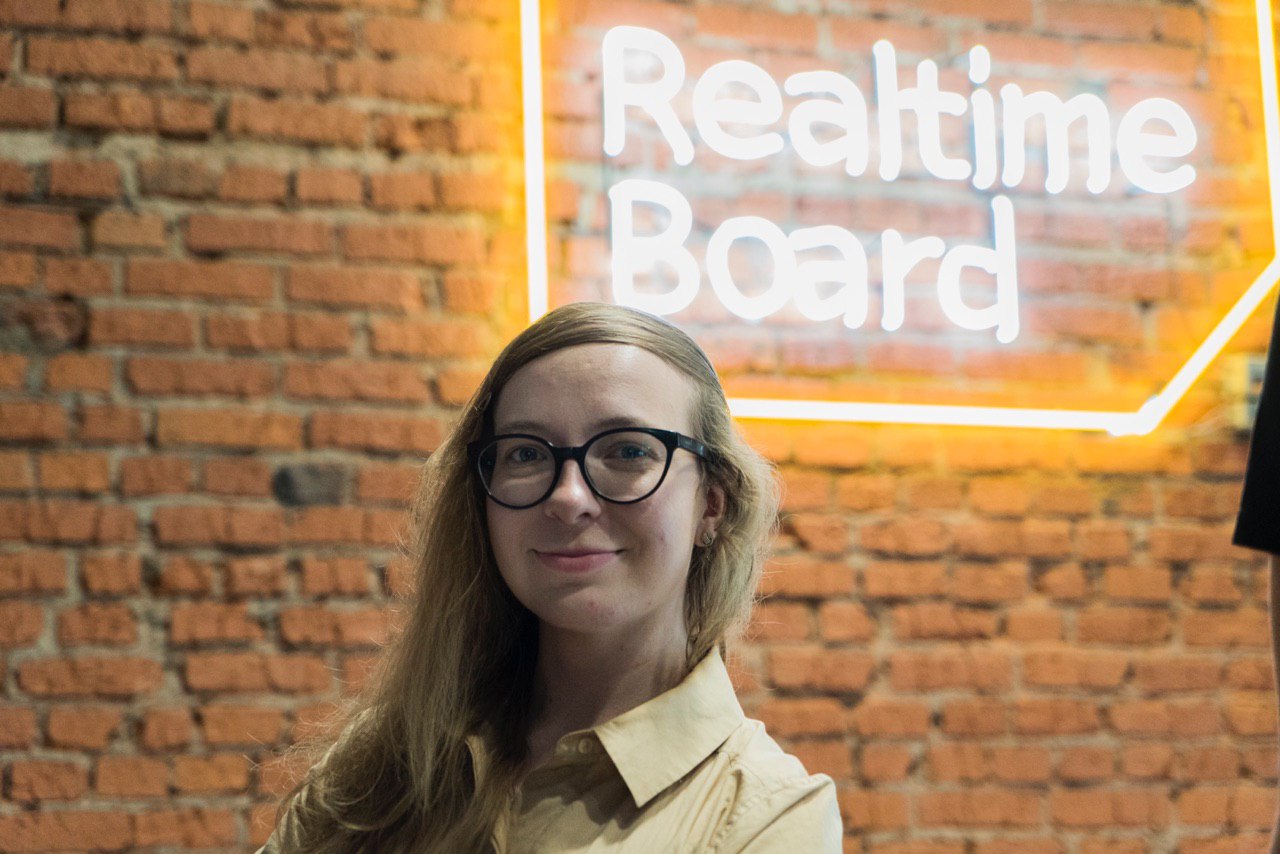
Since we started talking about this, who are your competitors?
Direct - Conceptboard and Mural. Indirect - these are products that solve one of the problems. For example LucidChart for diagrams, MindMeister for mindmaps, StoriesOnBoard for user-story.
In fact, this is our value proposition: instead of 10 products for different tasks, use one. We strive to solve 80% of such problems around visual collaboration.
Visual collaboration is not about design. We do not seek to compete with Adobe, Sketch, Figma. We are more likely about any visual solution to problems with other people. At the same time, it is important for us to maintain the simplicity of the product as part of the DNA. The product spreads quickly because it is simple.
You talked about a method that helps distribute the product from the bottom up ...
Yes, it is called " land and expand . " The product lands on a group of people and begins to grow. At best, just like a virus. Food marketers dream it to work that way. But not everyone succeeds.
A great example of success is Slack. He simply replaced both the messenger and the mail in corporations. People in companies need communication every day. If a small but active group begins to use slack, it penetrates the rest of the organization very quickly.
There is a trend towards “consumerization of the enterprise” - b2b products make them end-user. The paradigm of companies such as SAP and other ERPs is leaving, where you need to implement software from top to bottom. The role of making decisions about tools shifts down to where people directly work with tools. Often we see this when introducing agile into the corporation , and what is called digital transformation .
Are you a shoemaker with boots? How much do you do in your own product?
Lots of. We do not do detailed planning and tracking tasks there, as Miro is not intended for this. But every project inside begins with a board. Honestly, I often think about how much time would go into communication, if not for Miro, it would be very difficult.
Now we have a lot of internal use: these are workshops with a distributed team, and different schemes, and prototypes, and research. Almost all of the grocery work is there.
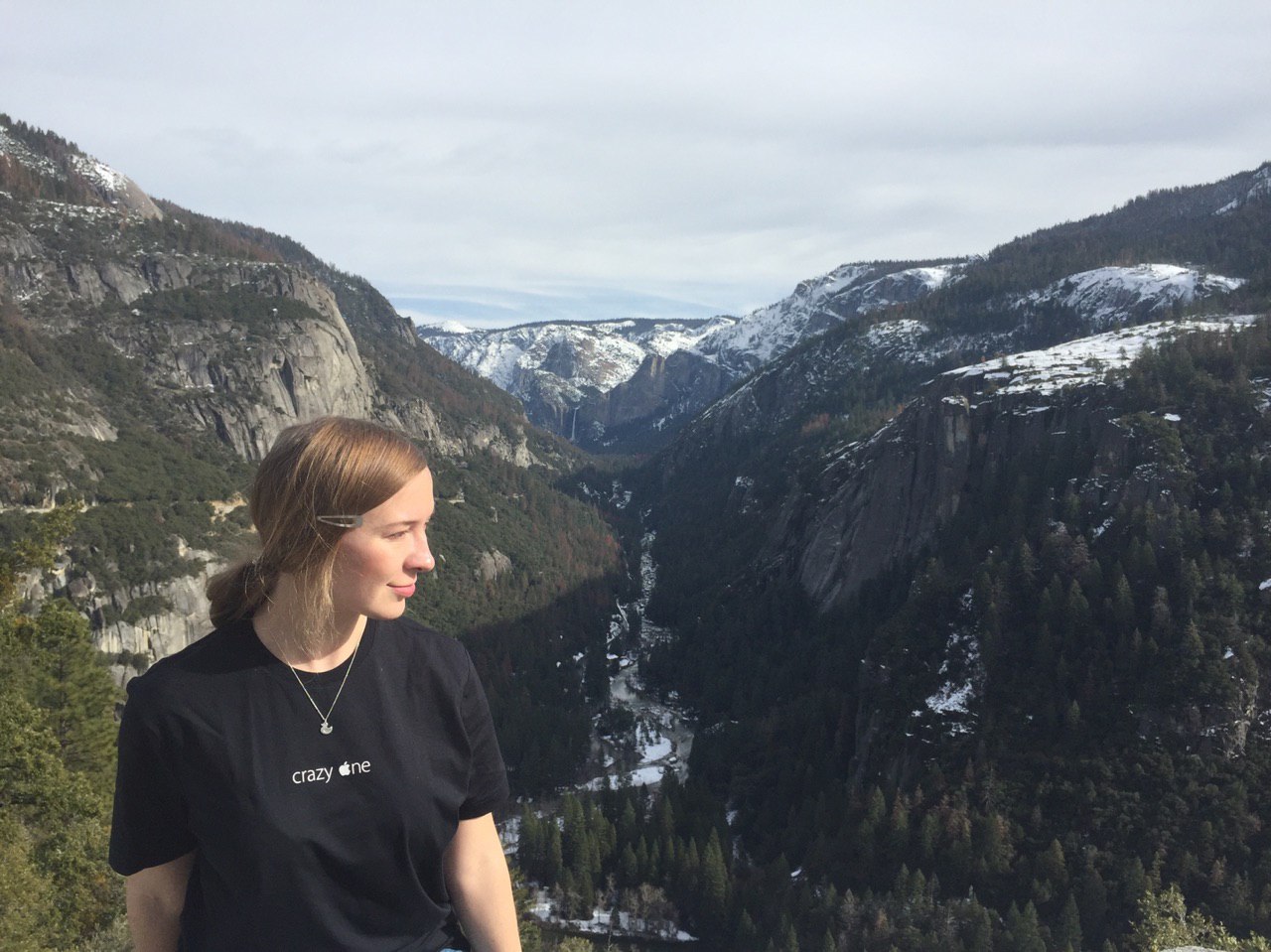
People and culture
Last year you performed at ProductCamp, and talked a lot about group dynamics, culture, values, trust, openness. Admittedly, these are not the parameters that you expect to hear from the CPO of a growing startup. Why is it important?
Because in no other way. You can achieve goals in different ways, but culture is very important to us. Not just like some emotional things - people are good at working together in a cool culture. It helps to grow. You cannot describe all the processes; you cannot create instructions and precedents for everything. Therefore, the role of culture is very great.
There is a turning point when the founders are turning from those who translate values into those who support them. When the team itself becomes those people in the organization that make the culture.
Intercom Des Trainer cofounder has great posts on how to make a product strategy. And in one of them, he notes that with growth, the founding team moves further from the product. A company outgrows a product, becomes a business. Functions appear such as marketing, sales, operations. If the founder thinks about all these things himself, it will be difficult for the business to grow.
Therefore, when you cannot describe the processes, you need the principles of decision making. This is the culture.
Reed Hastings (CEO Netflix) has a well-known mantra that culture is who we hire, whom we raise, and whom we fire ...
And there is. People are carriers of culture. Our team creates a culture, and thereby determines how we all make decisions.
What is most important in teamwork?
The trust.
In personal relationships, trust is built in the same way as in a team? In the sense that there is a family, and there is your team at work ...
The foundation, anyway, is trust between people. Emotional security. The ability to make mistakes. To be as you are. In fact, in work it is the same, only there is a certain angle from which you can look at all this.
Product experiments are essentially mistakes. You need trust and emotional security to exercise them. You will download. But there will be no condemnation. This is normal. You understand and accept mistakes, it becomes a common story.

Awareness and development
You have the words “awareness”, “degree of maturity”, “self-awareness” in your speeches. What does all this mean?
This means the extent to which people understand their emotional reactions, strengths and weaknesses, and how much they can manage them.
Recently, everyone who is not lazy is talking about mindfulness. The feeling that it is becoming something superficial, commodity. Even the term appeared, Mac Mindfullnes. What do you think about this?
I'm not talking about mindfulness, in fact, scattering terms does not see the point. We are all human, interacting with each other, and often do not realize what awareness is: how we look from the side, what emotions we experience. It all affects others. I have nothing to do with talking about mindfulness. For me, this is a hype story - it doesn’t bother me much. The essence itself is important, but I don’t feel like riding the crest of HYIPs.
Do you think self-development is a useful thing or unnecessary crap?
Useful. There is such a point of view on this issue. If you want to develop, then how? Will you wait for someone to come and help develop? For example, we as a company create the conditions for this. But if you do not do it yourself, then ... As Lebedev had the phrase: "How to motivate yourself? No way, stay in the ass. "
In short, that's why you are responsible for yourself and for your development. Take the legs in the hands and go to develop. There is no other way. But is it useful or not ... most importantly, skillfully use it. If it brings pleasure - excellent. If you do not get anything - this is garbage. Then, for example, you need to start working with someone external, with a coach.

Behavioral change, skills, attention hygiene
It is known that changing habits is difficult. How to change a person?
Question: why? If he likes where he is, he will not change. If he is stuck in the "Karpman triangle", where he is the victim, then the rescuer, then the aggressor. When a person finds himself in a situation where he does not like it, but he does not do anything about this, this is another matter. The way to get out: to realize where you are in that triangle; go beyond it; understand what kind of emotions and feelings; move from the position of the victim to the so-called position of the author - and do something about this situation. A shift occurs when you realize that this is all perception. The "field of distortion of reality" disappears.
I am in favor of someone helping you in such things. You may not see so much. You do not know what you do not know - this is called unconscious incompetence. A mentor, coach, mentor or psychotherapist can come to the rescue.
Is hygiene of attention necessary in the modern technological world?
Mandatory. Because the world is technological, but we have not ceased to be people in it. We are where our attention is. Why do you need to do this? Few things:
- Man himself to be happier. Happier Luli create a better relationship, work better, they produce wonderful products.
- Attention affects everything around. Everything begins with a person, and then extends to systems, processes. You are where your attention is. If it is in the field of where tin, crises, negativity, then you will think about how to defend yourself. And someone will not care for everything, he decides to build a new wonderful world.
It turns out idealism?
Not idealism, but goals. Where is our attention - where we build, or where we defend ourselves from attacks? Another point: what to do with a good, interesting goal, how to achieve it? You can think how it will not work, but you can think how to do it. Moreover, one can relate to everything from small tasks to global ambitions.
As an example, I think that Elon Mask, who launches Tesla on Mars, will succeed. The question is attention. He is fine with him.
With all the determination of the Mask, there are many signals that his employees get along very hard with him. Many burn out, leave ... Do not you think that there is some kind of polarity - the achievement and development of people?
Perhaps someone comes to Tesla to the Mask to burn out. I think this is a cultural issue. A management issue. I would not put these things as the opposite: achievement - relationships with people. This is more like a matrix.
What's in the upper right corner?
I am not a business consultant, I do not compose matrices everyday. (Laughs.) We strive for both achievements and relationships. Atlassian is not the only company with such a culture. Many CEOs and founders who were on Saastr talked about this. Many of them have earned enough money, and at the same time they talk a lot about culture. You talk with people at completely different levels of the hierarchy and - they all talk about culture.
For many talented people, it is super important to be human at work. Atlassian is a great example for me: everything is built on teamwork. SmartSheet CEO spoke at the conference about values. Dropbox says a lot about it.
When people at different levels say the same thing about culture, this can be trusted. Each company has its own culture. If Musk works this way and achieves results in this way, then he attracts such people. He has super-ambitious tasks. Let's see what happens.
What skills would you like your children to have?
- "Growth mindset." Super important. Most of the things in it, for example, self-healing. Understanding that mistakes are a step towards improving the result. Mistakes are not a defeat. Things and circumstances are different, they should not be perceived positively or negatively. Growth mindset is about moving forward. It helps to be happy.
- Mindfulness. We won’t leave anywhere. They go next to the previous skill.
- Communication. The ability to build relationships, empathy, understanding of people, the ability to give in relationships.
Happiness - what is it? And do you need to chase him?
I like the definition: happiness is a feeling of the total correctness of what is happening to you in the moment. I don’t understand how to chase him. This is about living the present. If you are in the moment and understand that you are where you would like to be, then this is happiness. And if you want to escape somewhere ... But this is a matter of perception: where is your attention.
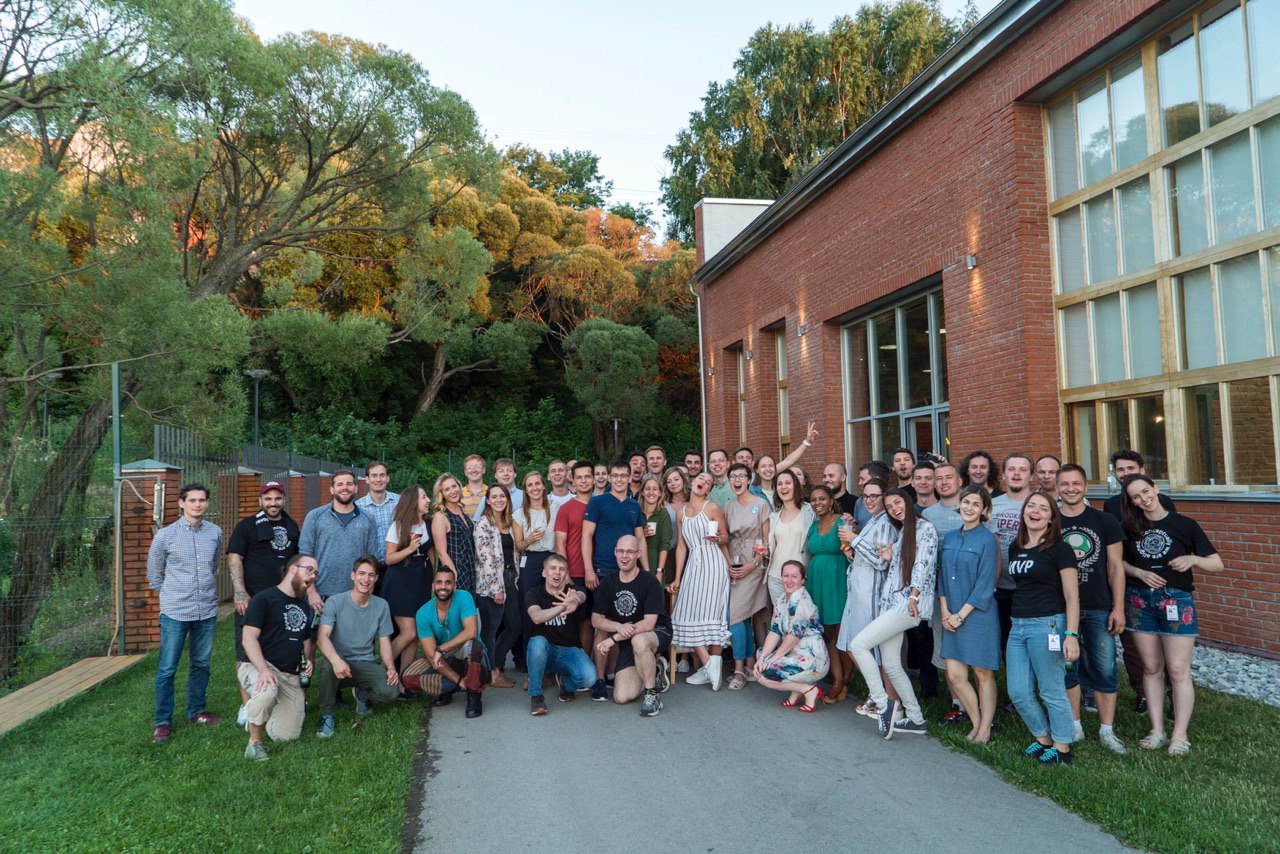
Conclusion
Top 3 product managers you follow. It is possible in Russia, it is possible in the world.
I rather look at the approaches of companies: HubSpot, Intercom, Slack, Atlassian. But if you name individuals, then:
- Brian Balfour, Reforge. He was VP of Growth at HubSpot, he has a cool blog. Now doing his consulting, Reforge. If you roll back, you can see that HubSpot is a forge of frames. Allows people to sprout.
- Des Traynor, cofounder of Intercom. He’s always cool about the product. He is sick of it. There is also VP of Product Paul Adams. Cool talks about the process.
- Skok david, forentrepreneurs.com . He writes about SaaS in general. Building a business history, product-led growth, how to integrate sales marketing into a product, separation of functions, etc.
In Russia, there are also many cool guys, but not everyone writes. I read in Russian Anya Buldakova, Kostya Gorsky.
What is important for a novice product to know in order to build a career in a tech startup?
All startups are different, and the product has a different role depending on the company. To begin with, you need to answer yourself who you want to be. It is good to understand the company, its expectations, and whether they coincide with yours.
We have at least you junior, even senior, at least VP - it is very important that you understand the process from beginning to end. How to gash a feature, do marketing, support it, move it forward, close it.
Anything you want to say to your readers?
We spend a lot of time at work. And besides the work content, there is an important thing - people with whom we share this time. I want us to really approach this as people and teams who can achieve something more together. I would very much like people to build trust in the teams, and consciously work in them.
It can be scaled: through culture, through principles. This is a very important thing. I would like us to pay more attention to how we work as members of teams and communities. Each of us is a member of several teams at once - both at work, and in personal life, and in society. It’s cool to learn to discover the potential of people, to recognize each other and build trust. Openness leads to amazing results.
Text: Alexey Ivanov
Community: @ponchiknews
